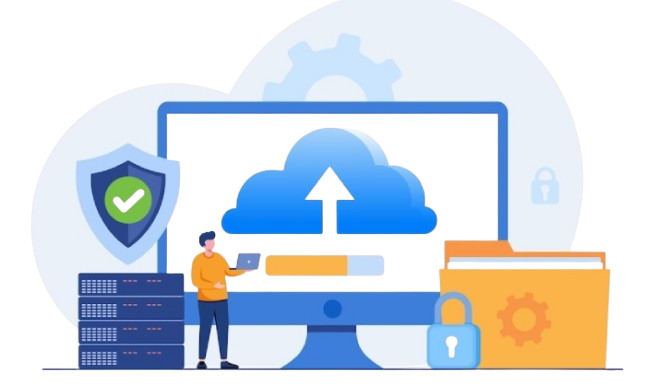In our modern, digitally-driven landscape, mergers and acquisitions (M&A) are frequently employed tactics for companies aiming to grow and broaden their market presence. When two firms come together, a key yet intricate IT challenge is integrating their digital infrastructures, particularly if both utilize Microsoft 365 (previously known as Office 365). Transitioning data between tenants in Office 365 facilitates uninterrupted collaboration, maintains data integrity, and ensures operational stability following a merger or acquisition. Nevertheless, this endeavor is quite complex and demands meticulous planning, accurate implementation, and comprehensive support after the migration is complete.
What is Cross-Tenant Migration?
Cross-tenant migration refers to the process of transferring various Microsoft 365 assets—including users, mailboxes, SharePoint sites, OneDrive accounts, and Teams data—from one organizational tenant to another. In this context, a "tenant" is defined as a unique instance of Microsoft 365 services allocated to a specific organization.
In the context of mergers and acquisitions (M&A), it is essential to merge tenants to enhance communication efficiency, reduce licensing expenses, and implement cohesive security measures. However, given the cloud-based nature of Office 365, performing cross-tenant migrations necessitates the use of specialized tools and approaches that differ from those used in traditional on-premises migrations.

Key Challenges in Cross-Tenant Migrations
1. Identity Management
Integrating the user identities of two companies can be a highly complex endeavor. It involves aligning user accounts, addressing any username conflicts, and handling access permissions, all while ensuring that everyday operations remain unaffected. This process demands meticulous attention to detail and careful planning.
2. Data Complexity
Office 365 encompasses much more than just email services. Businesses depend significantly on collaborative tools such as Teams for messaging, SharePoint for sites, OneDrive for file storage, and others. Ensuring a seamless migration of these resources without any loss or damage to data is a complex task that requires specialized tools and expert knowledge.
3. Downtime and Disruption
Reducing downtime is vital for sustaining business operations. It's important to design a migration strategy that prevents significant interruptions to email services, collaboration platforms, and everyday tasks to uphold productivity and boost employee morale.
4. Security and Compliance
Data is at risk during the migration process. Organizations need to safeguard sensitive information and adhere to industry regulations such as GDPR, HIPAA, or SOX. Implementing a migration strategy that prioritizes security is crucial to prevent data breaches and avoid legal repercussions.
Strategies for Successful Cross-Tenant Migrations
1. Pre-Migration Planning
- Evaluation and Exploration: Begin with an in-depth evaluation of both tenant environments. Gather information regarding the user count, mailbox sizes, activity within Teams, the configuration of SharePoint, and any external integrations.
- Establish Goals and Parameters: Specifically identify the services and datasets that will be transferred. Determine whether to merge, maintain coexistence, or implement a hybrid setup based on the requirements of the business.
- Select Appropriate Tools: Consider investing in specialized third-party migration solutions designed for cross-tenant transitions, such as BitTitan, Quest On Demand Migration, or AvePoint.
2. Identity and Access Management
- Factors to Consider for Azure Active Directory (AAD): Prepare for the synchronization of the Azure Active Directory between different tenants. It may be necessary to establish a temporary coexistence strategy for emails and calendars, utilizing tools such as Cross-Tenant Mailbox Migration and Calendar Sharing.
- Managing Domains: When consolidating domains (for instance, company.com), create a comprehensive strategy for reassigning the domain, updating DNS records, and reconfiguring user settings to avoid any service disruptions.

3. Data Migration Execution
- Email and Mailbox Transition: Initiate the process with a few pilot migrations to identify and resolve any potential problems. Subsequently, transition user groups in phases, giving priority to those users who are most valuable.
- Team Collaboration Spaces: Migrating team settings can be intricate. It's essential to manage the transfer of channels, posts, tabs, and permissions with great care. Utilizing specialized migration tools for Teams is advisable.
- File Management (OneDrive and SharePoint): Ensure that metadata and access rights are preserved during the migration of OneDrive and SharePoint.
4. Post-Migration Validation and Support
- Evaluation and Verification: Conduct comprehensive testing of transferred mailboxes, access rights, and application performance. Involve end-users from the outset of the testing phase to identify potential problems early on.
- Instruction and Engagement: Equip staff for the upcoming changes by organizing training workshops, providing frequently asked questions, and maintaining clear communication channels.
- Continuous Oversight: Keep an eye on system functionality, user permissions, and overall performance after migration. Resolve any outstanding issues swiftly to prevent extended interruptions. Access detailed insights on this topic.